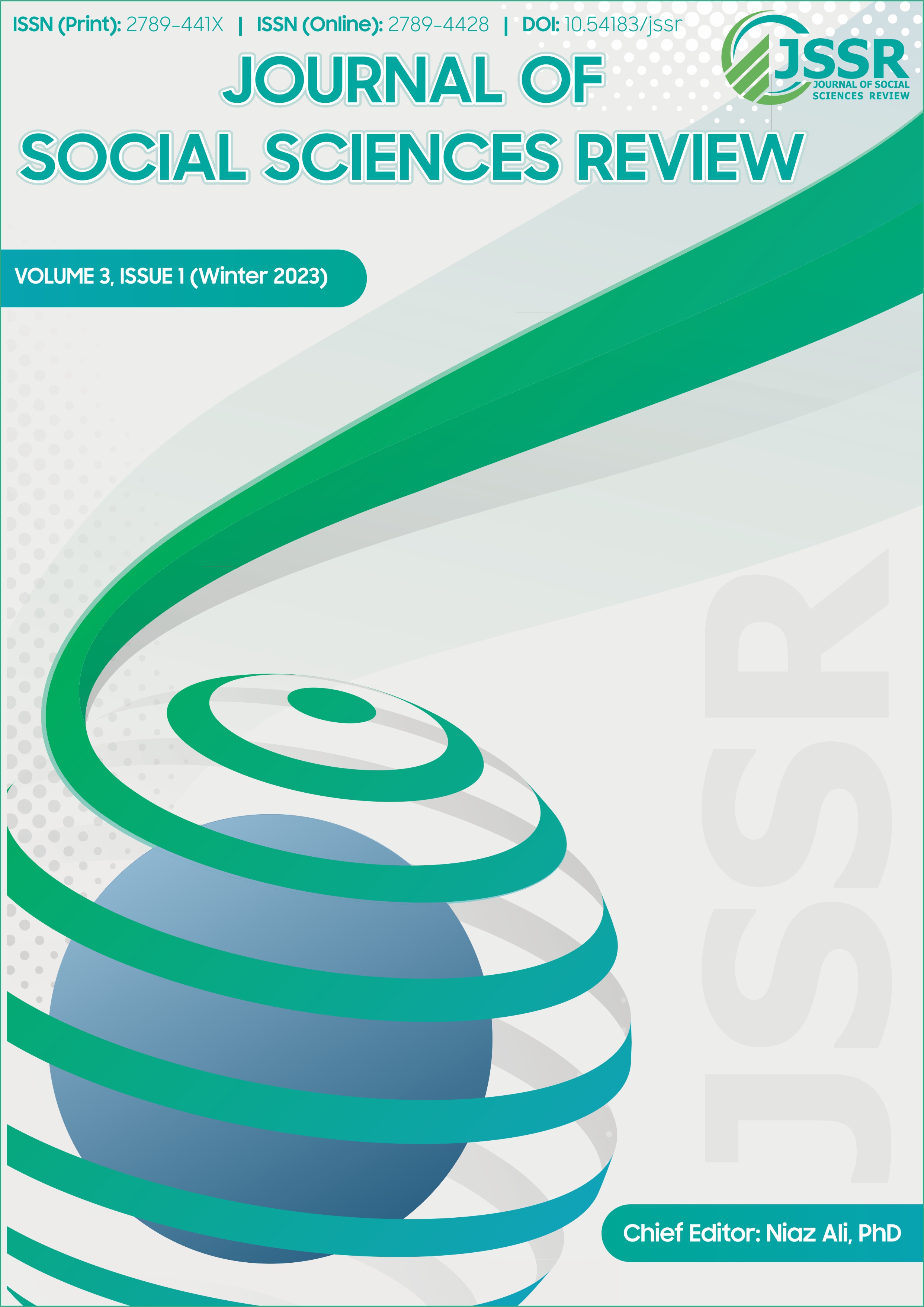Relationship between Autocratic Leadership Style and Teachers’ Job Performance in Secondary Schools of Khyber Pakhtunkhwa
DOI:
https://doi.org/10.54183/jssr.v3i2.253Keywords:
Autocratic Leadership Style, Teachers’ Job Performance, Secondary School Head, Secondary School TeacherAbstract
This study was intended to investigate the ‘Relationship between Autocratic Leadership Style and Teachers’ Job Performance’. The main objective of the study was, ‘To find out the relationship between autocratic leadership style and teachers’ job performance’. All secondary school teachers (SSTs) of the three chosen districts of Khyber Pakhtunkhwa, i.e. Kohat, Peshawar and Buner were included in the target population of this research. Sample of this survey was selected from secondary schools of the three mentioned districts. The total number of secondary school teachers of the selected districts was 1092. Two closed ended research tools, Leadership Styles Questionnaire and Teachers’ Job Performance Questionnaire were developed. Reliability of total item correlation of the two questionnaires were found out using Cronbach’s Alpha which were 0.817 for Leadership Styles Questionnaire (LSQ) while 0.916 for Teachers’ Job Performance Questionnaire (TJPQ). On the basis of data analysis, the null hypothesis was rejected. Based on the findings of the study, secondary school heads (Headmasters and Principals) are recommended to help the teachers in classroom management, for improving their teaching skills, management skills, discipline, regularity and interpersonal skills. It is also recommended that special workshops, seminars and trainings on capacity building of the teachers may be arranged for enhancing their capabilities and overall improvement of the institutions.
References
Bateman, T. S., & Snell, S. A. (2002).Management: Competing in new era. NewYork: McGraw- Hill.
Chandler, J. N. (1991). Management of distance education. New Delhi: Sterling Publishers Private Limited.
House, R., Javidan, M., Hanges, P., & Dorfman, P. (2002). Understanding cultures and implicit leadership theories across the globe. Journal of World Business, 37, 3-10.
Hussin, A. (2011). The relationship between job satisfaction and job performance among employees in trade winds group companies Malaysia; Open University Malaysia.
Isaac, R. G., Zerbe, W. J., & Pitt, D. C. (2001). Leadership and motivation: The effective application of expectancy theory. Journal of Managerial Issues, 13, 212–226.
Lewin, K., Lippit, R. and White, R.K. (1939). Patterns of aggressive behavior in experimentally created social climates. Journal of Social Psychology, 10, 271-301.
Owens, R. G. (2004). Organizational behavior. USA: Pearson Education.
Pearce, C. L., & Conger, J. A. (2003).Shared leadership: Reforming the how’s and why’s of leadership. Thousand Oaks, CA: Sage.
Rivai, V. (2014). Manajemen Sumber Daya Manusia untuk Perusahaan [Human Resource Management for Companies]. Depok: PT. Raja Grafindo Persada.
Downloads
Published
Issue
Section
License
Copyright (c) 2023 Copyright in the Journal of Social Sciences Review is retained by the author(s). Authors also grant any third party the right to use the article freely as long as its integrity is maintained and its original authors, citation details and publisher are identified.

This work is licensed under a Creative Commons Attribution-NonCommercial 4.0 International License.
SSR's Editorial Board shares the vision of providing free access to information, education, and science for everyone, thus promoting its content through an OPEN ACCESS POLICY, fulfilling the DOAJ definition of open access. The JSSR adheres to an Open Access and Copyright Licensing Policy based on the belief that making research freely accessible to the public promotes greater global knowledge sharing.
The JSSR uses the Creative Commons Attribution-NonCommercial 4.0 International License. The authors who apply and publish in JSSR consent to abide by the copyright policy set out in the Creative Commons 4.0 license (Attribution-NonCommercial 4.0 International license).
- Copyright in the Journal of Social Sciences Review is retained by the author(s).
- Authors also grant any third party the right to use the article freely as long as its integrity is maintained and its original authors, citation details and publisher are identified.
While "By 'open access' to this literature, we mean its free availability on the public internet, permitting any users to read, download, copy, distribute, print, search, or link to the full texts of these articles, crawl them for indexing, pass them as data to software, or use them for any other lawful purpose, without financial, legal, or technical barriers other than those inseparable from gaining access to the internet itself."



